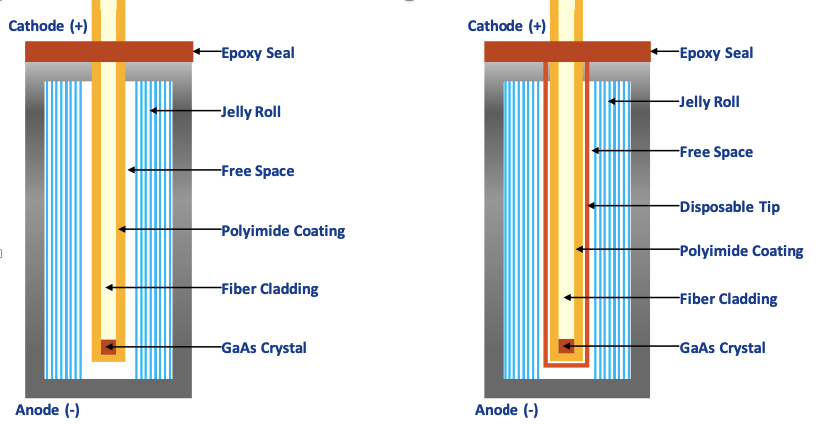
The eMobility sector is going through its transformation phase. With the increasing focus on electric vehicle from the public and private sector, every player in the eMobility industry is working relentlessly on increasing the performance of the electric vehicle with higher efficiency, larger capacity and reduced size. The only objective of all this research and development is to make electric vehicle at par or even better than IC engines at a lower cost.
High Voltage EV Batteries, being the most critical component of the electric vehicle are the ones that are focused most for capacity enhancement, performance optimization and Cost/size reduction. Researchers in the entire value chain of EV Battery, Cell, Module and Pack level are constantly working on fast charging and capacity enhancement projects.
It is one of the most critical aspect in the design and development of EV Batteries for fast charging and capacity enhancement projects. The crucial steps involved in battery thermal management are first identifying the source of the heating, second localizing the weak points in the design and then finally managing thermal issues either with design changes or with better cooling mechanism. This article is mainly focused on Benefits of fiber optic sensor in core temperature monitoring of cylindrical cell.
Under the fast charging (3C, 4C and more) and discharging (6C, 8C or more) cycles cylindrical cells face tremendous electrochemical and mechanical stress. As a result of these continuous stress, Cells heat up internally and heat gets transmitted to the outer surface in radial and axial directions. It becomes very crucial to understand the stress handling capability of cells under different operating conditions. The EV battery cells must be designed for a wide range of ambient and automotive operating conditions. Identifying thermal issues accurately, during the product development stage and mitigating them effectively is the key for avoiding the huge cost of product recall.
Engineers have been using very small thermocouples to measure the thermal profiling of cylindrical cell core. In order to avoid damage to the cell chemical due to the thermocouples, the sensors are coated with a complex and expensive chemical isolation. The isolation process is complex and still not a full proof solution for safe and accurate temperature measurement of cell core. Therefore, Fiber Optic Temperature Sensors are the most suitable alternative to the thermocouples due to the following features of fiber optic sensors:
1. Ultra-Small footprint (0.4mm) to fit into Cell Core. This will ensure minimal damage to the mechanical structure of the cylindrical cell.
2. Safety: Fiber optic sensors are made of silica, Polyimide, Gallium Arsenide (GaAs) crystal and very small Epoxy. Any of the constituents of the complete sensor does not pose any risk to the cell chemical.
3. Accurate and Noise Free readings – The sensors have an accuracy of ±0.2⁰C (relative) with 100% repeatability. And this accuracy is not impacted by Strain / Pressure inside Cell.
4. Wide Measurement Range: The range of measurement is -269⁰C to +300⁰C.
5. Higher Response Time: The sensors are capable of measuring with 5Hz to 30Hz sampling rate.
6. Sensors Stability: These sensors are very stable under high electrical, Magnetic and Chemical fields.
7. Lower cost of installation – The sensors do not need any expensive Isolation / coating. The sensors are also adjustable to fit at different locations inside the cell core.
Fiber Optic Temperature sensors can be installed either at the cell formation stage or afterwards. It is simple to fit the sensors during the cell formation stage compared to the fitting sensor on a manufactured cell core. Figure 1 below shows the detailed view of how the Fiber Optic Temperature Sensor installed into Cylindrical Cell Core.

Figure. 1 Fiber Optic Sensor installed inside the EV Battery Cell
This is a simple approach where Fiber Optic Temperature Sensor can be placed at the core of the cylindrical cell while the assembly process of the cell, before the formation stage. This will require to drill a hole in the cathode cap of the cell. After the formation process, the cathode cap opening must be sealed with silicone sealant, epoxy or Kapton tape.
To install a Fiber Optic Temperature sensor on the readymade Battery cell, requires the use of a drill and glove box. Firstly, it will require to disassemble approximately 8 to 10 cells to find out the internal structure of the cell type. Once the internal structure of the cell is determined a new cell can be placed on the Glove Box for drilling hole. The Glove box is used to prevent the exposure of cell internals to oxygen (O2) and moisture (H2O). A sharp and high precision drill is used to drill a small hole into the cell core. The hole must be as small as possible so that it does not impact the cell electrochemical behavior. Care must be taken while drilling the hole to avoid short circuit and protect the electrode jellyroll.
The easiest option for drilling hole is, open the cathode and drill hole on the plastic protection and insert the fiber optic sensor inside the core. The opening must be sealed with special glue and tape to make it hermetically sealed without damaging the Fiber Optic Temperature Sensor.
Disposable Caps (made of Polyimide material) can also be used to fit into the hole first and then insert the fiber optic temperature sensor, as shown in Figure 1 (b) above.
The fiber optic temperature sensors than can be connected to the monitor for temperature measurement and trending. The monitor has flexibility to record the temperature data, display time-stamped trending and export data to third party systems. The monitor supports industry-standard protocols i.e. High-Speed CANBUS, Modbus, DNP3.0 and comes with drivers for major development environments i.e. Matlab, LabView and python. The below figure 02 shows the sensors and monitor installation.
Conclusion:
The Fiber Optic Temperature Sensor is the most suitable sensors to use inside the battery cell for Cell Core temperature monitoring. The process of installing the fiber optic temperature sensors is easier than the one used for traditional sensors because fiber optic temperature sensors do not require any isolation. With higher accuracy, repeatability and response of fiber optic temperature sensors, it has become possible to understand better the chemical process inside and identify the real causes of temperature increase. It was found from multiple experiments that the Cell Core temperature is mostly higher than the cell body temperature and the difference is not constant but varies with the charging and discharging rate. The core temperature is maximum during the end of charging and discharging. The difference between the core and cell body temperature could be anywhere from 1⁰C up to 8⁰C.
Temperature monitoring of the core cell becomes very critical for fast charging applications. The outcomes of the Cell Core temperature monitoring are being used for battery modelling, Battery Management System and thermal protection of battery cell, module and the entire pack. The accurate Core Cell temperature ensures that thermal safety limits are set correctly to avoid thermal runaway issues.
Click here to know more about Fiber Optic Temperature Monitors
Click here to know more about Fiber Optic Temperature Sensors